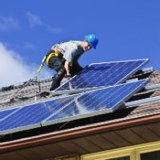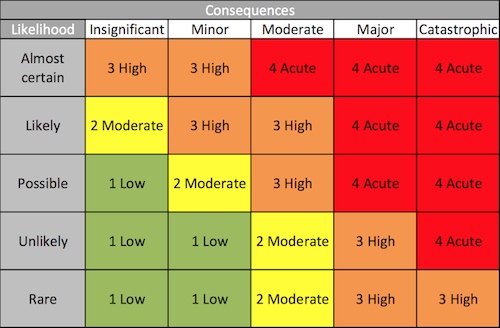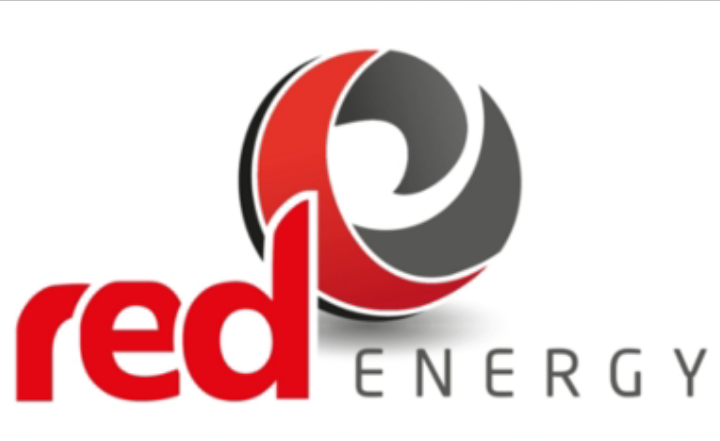Title Page
-
Job Address / Title:
Safe Work Method Statement (SWMS) - Part 1
-
Activity: Solar Panel Installation – Grid Connection
Review Number
-
Review Number: 1
-
Company name: W Roberts Electrical
Address: 572 Cummins Lane, Broken Hill, 2880
ABN: 74627943337
Company Contact: Wiremu Roberts
Position: Director
Phone No: 0415598146
SWMS APPROVED BY: (Employer/PCBU/Director/Owner)
-
Name and Signature of person responsible for ensuring compliance with SWMS: Wiremu Roberts ( Director )
Relevant workers must be consulted in the development, approval and communication of this SWMS.
-
Wiremu Roberts ( Director )
Project Details
-
Job Address:
-
Job Description:
-
Principal Contractor Company Name: W Roberts Electrical
Principal Contractor's Name and Signature: Wiremu Roberts -
Date SWMS provided to Principal Contractor:
Risk Assessment Matrix
-
- 4A: Acute DO NOT PROCEED > requires immediate attention. Introduce further high-level controls to lower the risk level.
- 3H: High > Review before commencing work. Introduce new controls and/or maintain high-level controls to lower the risk level. Monitor frequently to ensure control measures are working.
- 2M: Moderate > Maintain control measures. Proceed with work. Monitor and review regularly, and if any equipment/people/materials/work processes or procedures change.
- 1L: Low > Record and monitor. Proceed with work. Review regularly, and if any equipment/people/materials/work processes or procedures change. -
Hierarchy of Controls
-
• Elimination - Risk will be eliminated where possible
↓
• Substitution Isolation Engineering - Where risk remains, one/combination of controls will be used
↓
• Administrative - Where risk remains, administrative controls will be used
↓
• Personal Protective Equipment (PPE) - Where risk still remains, it will be reduced as far as reasonably practicable with use of PPE.
Activity: Solar Panel Installation – Grid Connection - Part 2
-
Overall Risk Rating after Controls
SWMS Scope
-
SWMS Scope: This SWMS covers risks associated with general installation of solar panels (on-grid) on a roof. Ensure the manufacturer’s installation manual/guide is available for specific information on all installation works.
This SWMS does not cover Working At Heights, Working in Confined Spaces, Working with Hazardous Chemicals, Working with Electricity, Using Ladders, Using Scaffolds, Elevated Work Platforms and Scissor Lifts in sufficient detail. Dedicated SWMS should be followed for these tasks, and for any risks not covered in this SWMS.
Personal Protective Equipment (PPE) Ensure all PPE meets relevant Australian Standards. Inspect and replace PPE as needed.
-
Foot Protection
-
Hearing Protection
-
High Visibility
-
Head Protection
-
Hand Protection
-
Protective Clothing
-
Breathing Protection
-
Sun Protection: Broad brimmed hat, UV rated clothing, SPF 30+ sunscreen, tinted safety glasses with adequate UV protection
High Risk Construction Work
-
This work activity involves the following “High Risk Construction Work”:
• Moving Plant
• Energised electrical installations or services
• Asbestos
• Working at heights greater than 2 Metres, including work on telecommunications towers.
Dangerous Goods / Hazardous Chemicals
-
Some adhesives and solvents are classified as Hazardous Chemicals according to the Australian Safety and Compensation Council (ASCC) and classified as Dangerous Goods (DG) according to Australian Code for the Transport of Dangerous Goods by Road or Rail (ADG Code). Obtain, read and follow Safety Data Sheets for all chemicals used for the task.
Environmental risks may include pollution of waterways or ground surfaces due to lack of clean up of waste materials or chemicals.
Job Step: Planning
-
Consultation in relation to hazards and risks. Ensure:
- Consult with the person you are carrying out the work for on the potential hazards and risks associated with the task
- If represented by an elected health and safety representative, the representative is included in any consultation
- Any other persons on site (trade or otherwise) who are affected by the same matter are consulted and co-operative arrangements are made (e.g. co-ordination or alternative measures)
- Document consultation and action items. -
Liaise with Principal Contractor/Client to establish the following on-site systems and procedures are in place:
- Health and Safety rules
- Induction for all workers – site specific
- Supervisory arrangements
- Communication
- Injury reporting
- Hazard reporting
- Personal Protective Equipment
- Site plans – showing no go zones for pedestrians
- Traffic Management plans
- Exclusion Zones
- Risk Assessments
- SWMS and JSA’s. -
Ensure:
- All workers on construction sites have a valid Construction Induction Card (or equivalent)
- All persons entering confined spaces must have attended an accredited training course in safe working in confined space and hold current accreditation. Refer to Confined Spaces SWMS for detailed information if Confined Spaces work is required for the job
- If scaffold is required, a licenced Scaffolder will be required to be engaged to erect, certify, monitor and disassemble Scaffolds. Check with State Regulator for specific requirement for Scaffolding
- If ladders required, they must be suitable for the job and the work environment, and meet the requirements of the relevant Australian Standard
- All workers are trained and familiar with the equipment and tools they will be using and the tasks they will be performing. -
Assess the exposure of workers to noise, including the frequency of exposure to noise levels that exceed the legislated Exposure Standard while working on-site and determine required controls such as Audiometric Testing and PPE.
Ensure system designed by competent persons and meets all relevant Australian Standards (AS 4509.2 – 2002 Stand-alone power systems: Design Guidelines). -
Assess installation site. Check:
- Anchor points (type, work load and position to be determined by competent person - structural engineer)
- Proximity to overhead electric lines
- Type of roof (pitched, tile, corrugated iron, presence of sky lights etc)
- Condition of roof (fragile, brittle, glazed tiles, presence of algae etc)
- Presence of hazardous materials such as asbestos, lead, silica etc)
- Load bearing capacity of roof
- Height of work area
- Type of height access equipment required
- Sufficient access for equipment and materials, including lifting aids/cranes.
- Number of persons expected on roof/ceiling space
- Power supply
- Location of existing services (pipes, cables, conduits)
- Traffic Management requirements. -
Ensure roof has been assessed by competent person (such as structural engineer) to ensure surface is capable of holding weight of persons, equipment and panel assembly.
Determine suitable placement for panels. Consider:
- Requirements of relevant Australian Standards
- Requirements of the Building Code of Australia
- Wind loading and wind actions
- Surrounding environment (shade, protection from winds, other structures / obstructions)
- Manufacturer Requirements. -
Take into account the following for placement/positioning of panels:
- High wind areas – comply with Part 3.10.1 Volume 2 of the Building Code of Australia
- Terrain and topography effects (example: is dwelling protected or exposed to winds
- Localised wind pressure (panels placed close to roof edge will receive different pressure than those in the centre)
- Timber structures:
o Hardwood or softwood
o Rafter width
o Screw joint direction (side or top entry)
o Screw materials
o Shank diameter and length
o Number of screws required
- Suitable brackets:
o As per wind loading
o For type of structure (steel or timber)
o Check relevant Australian Standards)
- Correct switchgear as per manufacturer’s instructions
- Type of roof materials – tile, colorbond etc
o Attachment instructions for roof material
- Seek advice from competent person (Structural Engineer) if needed. -
Develop a site and task specific SWMS to control risks. Include access to heights (including use of specific access plant), isolation of electricity, and hoisting panels onto roof and equipment and inspection requirements.
Conduct an electrical safety risk assessment and develop a task specific SWMS. Include:
- Proximity to live electrical equipment
- Prospective fault levels
- Site conditions
- Weather conditions
- Noise
- Lighting
- Spotters/safety observers
- Permits
- Proximity to vehicle/pedestrian traffic
- Working environment (such as areas with reduced mobility – behind switchboards, roof spaces etc)
- Working at heights, confined spaces etc
- Possibility of inadvertent operation of equipment that is being worked on (LOTO procedures)
- Disruption of services. -
Develop risk controls as applicable.
Note: LOTO (Lock out/tag out) procedures must be established. Include:
- Shut down
- Identify all energy sources
- Identify all isolation points
- Isolate all energy sources
- De-energize all stored energies
- Lock out all isolation points
- Complete and attach Danger Tag and lock(s) at each isolation point.
- Test by “trying” to re-activate (without exposing the tester or others to risk). -
Person responsible to implement control measures: Wiremu Roberts
Job Step: Preparation
-
Ensure suitable equipment for job. Examples:
- Work at heights:
o Ensure roof edge protection, scaffold, scissor lift or step platforms are used
o If ladders are only option, ensure they are industrial, good condition, not metallic, wire-reinforced or conductive, clean and dry, set-up correctly and secured. Ensure ground is firm and stable so that ladder will not move. Barricade base of ladder to prevent accidental contact if required
o Where a roof pitch exceeds 35 degrees, do not stand on the roof. Work from a cherry picker, scaffold or travel restraint system
o If using travel restraint or fall arrestors, ensure harness and clips are compatible, anchor points have been assessed by qualified persons, training undertaken and emergency plan in place for rescue within required time limits -
- Hazardous Manual Tasks
o Use mobile crane, hoists or other lifting equipment to move materials onto roof.
o Ensure plant clear of electrical lines and other obstructions, suitable SWL at required reach (radius), lifting gear suitable
- Hazardous Materials
o If cutting/drilling into structures, determine material type. Provide suitable personal protective equipment for short term works – example: Non-Friable Asbestos: Protective clothing, P1 or P2 half face (cartridge or disposable). -
Testing Equipment (as applicable):
- Good condition and working (particularly, leads, probes, clips)
- Clean, no cracked or broken insulation
- Suitable for all potential fault voltages
- Multimeters, RCD performance tester, earth loop impedance testers, voltage testers, insulation resistance tests etc, are tested for accuracy
- Suitable for hazardous/flammable areas if required
- Tested to work before use.
Tools:
- Properly designed and insulated hand tools
- Power tools Class II type (double insulated) as a minimum
- Guards in place
- Electrical leads in good condition and tested/tagged, RCD’s in use
- Correct for job/used for purpose. -
Note: The use of metallic measuring tapes, rulers and tools with exposed conductive parts should be avoided when working on or in the vicinity of live electrical equipment.
Barriers and Insulating Mats:
- Should be marked to comply with relevant Australian Standard
- Inspected for any defects
- Suitable material to be effective.
Avoid jewelry, exposed metal zips, watches, metal-framed glasses. If required to be worn, ensure properly insulated.
Ensure suitable barricades are placed below work area to ensure materials cannot fall onto workers / public. -
Ensure:
- Traffic management in place where required. Include:
o Warning signs and physical barricades
o Roadside parking – cones, signs etc
o Spotters (if crossing roads with materials)
o Pedestrian exclusion signs
o High visibility clothing
- Sufficient lighting
- Suitable weather conditions (do not work in severe weather, icy conditions, low visibility or high winds)
- Installation manual available and read by all installers
- Installation equipment operational and in good condition
- Materials available as required
- Electrical leads are not placed in areas where they will pose a tripping hazard or be run over. -
Ensure power is isolated to as required for installation works. Follow LOTO procedures:
- Circuit breakers, switches and combined fuse switch units are locked out.
- Use locks or suitable temporary securing devices (that cannot be disrupted)
- Where isolation is done remotely, ensure all relevant conductors are bonded together and to general mass of earth at site.
Note: Temporary bonding conductors must always be bonded together and attached to the general earth before attached to any de-energized component of the electrical installation. Removal of the bonding conductors must be carried out in reverse order. Suitable PPE should be used when attaching or removing temporary bonding conductors. -
Person responsible to implement control measures: Wiremu Roberts
Job Step: Pre – Operational Inspection
Hazards include:
-
- Plant – operating
- Vehicles
- Working with knives and hand tools - laceration/cuts
- Working near / with Electricity
- Hazardous Manual Tasks - lifting, carrying, putting down objects, bending, awkward positions
- Objects on ground / uneven surfaces.
Risks include:
-
- Being run over/ struck by mobile plant or vehicle causing serious injury/ death
- Collision with objects / plant / vehicles
- Laceration/Cuts
- Muscular stress
- Electric shock
- Electrocution
- Slip & trip injuries.
Control Measures to Reduce Risk
-
Risk Ratings Before Control: 3H
-
Inspect Equipment. Examples:
Lifting Plant:
- No fluid leaks
- Hoses/couplings not cracked/split
- Controls labeled, gauges, indicators functional
- Safety decals in place and legible
- Flashing lights/reversing beepers functioning
- Mirrors are present, functional and adjusted correctly
- Cabin windows are clean and undamaged
- Work lighting sufficient and functional
- SWL displayed (where required)
- Tyres are sufficient tread, no cracks, even pressure. -
- Attachments compatible
- Locking pins/clips for attachments are available
- All safety guards are in place and undamaged
- Seatbelt present and in good condition.
- Fire extinguisher present and secured
- No debris, oil, tools on deck, walkway or steps.
- All stored items in cabin are secured. -
Scaffold / Temporary edge protection:
- Meets relevant standards
- Erected by competent persons
- No missing components
- All components compatible
- Certified safe for use as required.
Power tools:
- Guards prevent access to danger areas
- No damage
- Batteries fully charged
- Electrical leads undamaged, tested/tagged, RCD’s.
Do not use if any fault/damage/missing parts. Report immediately and follow tag-out/lock-out procedures. -
Person responsible to implement control measures: Wiremu Roberts
-
RIsk Ratings After Control: 2M
Job Step: Installation
Hazards include:
-
- Plant – operating
- Vehicles
- Working with knives and hand tools - laceration/cuts
- Struck by falling object – tools, equipment falling from ladders/scaffold/EWP
- Working near / with Electricity
- Hazardous Manual Tasks - lifting, carrying, putting down objects, bending, awkward positions
- Objects on ground / uneven surfaces
- Working at height above 2m
- Dust
- Noise
- Exposure to Hazardous Chemicals – solvents, adhesives
- Asbestos
- Confined Space.
Risks include:
-
- Being run over/ struck by mobile plant or vehicle causing serious injury/ death
- Collision with objects / plant / vehicles
- Laceration/Cuts
- Musculoskeletal Disorder / Muscular stress
- Injury caused by being struck by falling object
- Electric shock
- Electrocution
- Slip & trip injuries
- Falling from height causing serious injury or death
- Dust inhalation
- Hearing Loss
- Illness from exposure to Hazardous Chemicals
- Exposure to Asbestos causing serious illness or death
- Hazardous Atmosphere.
Control Measures to Reduce Risk
-
RIsk Rating Before Control: 3H
-
Isolate Electricity supply before commencement if required. Notify all persons who will be affected by interruption to electricity supply prior to shut down. Follow LOTO procedures.
If changes to design plan are required (eg: changing location of panel assembly) seek permission from qualified persons.
Follow manufacturer’s instructions and site/task-specific SWMS for installation of panels. Ensure all panels are adequately secured to roof.
Monitor barricaded area regularly to ensure no persons enter exclusion zone under installation area.
Only walk on safe areas (such as support beams). Check for electrical lines or other obstructions when handling panels. -
When using crane to lift materials onto roof, ensure:
- Sufficient SWL
- Crane/lifting aid in suitable location, with sufficient room for outriggers, and traffic management in place as required
- Load not lifted above persons
- No work within 3m of overhead electric lines (use qualified Spotters if necessary).
When working in ceiling spaces:
- Ensure joists/purlons are capable of holding weight of person and equipment and tested for load capacity
- Don’t stand on fragile areas – such as plasterboard
- Walk along planks and crawl if required. -
Avoid working in static or awkward postures (such as bending or working with arms raised above head height) for more than 30 minutes at a time and/or 2 hours over entire shift.
Ensure regular rest breaks taken.
Inspect all materials before installation. Check for broken glass. Wear gloves if exposed to sharp edges.
Ensure correct tools used for roof type. Example:
- Do not use hammer function on drill for tile/slate
- Check for rust spots or signs of weakness on corrugated tin/iron roof and use hole saw to drill. Ensure holes are filled with silicone for weatherproofing.
Only undertake work allowed under specific license. Example:
- Electrician License required for electrical installations. -
Ensure works comply with electrical safety guidelines. Example:
- Inverters do not feed back into grid (anti-islanding)
- Low voltage part of install inspected by Licensed Electrical Inspector
- Switchboard in clearly and permanently marked with warning information (dual energy), location of isolation switches to solar panels, inverter unit, mains etc
- All cables are secured and protected (secured under panels to avoid environmental damage)
- Provide user instructions to recipient of panels including a shut-down procedures
- Licensed Electrical Inspector to inspect completed install
- Issue Certification of Electrical Safety upon completion.
Clear area of scraps/waste and dispose of as required. -
Person responsible to implement control measures: Wiremu Roberts
-
RIsk Rating After Control: 2M
Job Step: Maintenance
Hazards include:
-
- Working with knives and hand tools - laceration/cuts
- Working near / with Electricity
- Hazardous Manual Tasks - lifting, carrying, putting down objects, bending, awkward positions
- Objects on ground / uneven surfaces.
Risks include:
-
- Laceration/Cuts
- Electric shock
- Muscular stress
- Slip & trip injuries.
Control Measures to Reduce Risk
-
RIsk Rating Before Control: 3H
-
All equipment to be maintained as per the manufacturer’s instructions.
All maintenance and repairs to be carried out by a competent person.
Electrical equipment to be tested and tagged monthly.
Keep log book of repairs and maintenance history.
Check condition of PPE – clean & replace as required.
When conducting maintenance on panels that have been connected to the grid/power:
- Follow LOTO procedures before works are conducted
- Allow sufficient time for residual /stored energy to dissipate from the assembly. -
Person responsible to implement control measures: Wiremu Roberts
-
RIsk Rating After Control: 2M
Emergency Procedures / Emergency Response
-
Emergency Response: Call 000 immediately.
If electric shock occurs:
- Free person from source of electricity if safe to do so (use dry, insulated materials such as a dry board, belt or clothing)
- Do not touch victim or power source until confirmation that electrical source removed
- When safe, approach victim and determine whether they are breathing.
- Undertake CPR if required.
Develop site-specific rescue procedures/SWMS.
Ensure all workers on-site are trained and familiar with emergency and evacuation procedures.
Ensure safety observers/spotters or others required to respond in the event of an emergency have undertaken training within the past 12 months in rescue and resuscitation procedures. -
Develop and implement an emergency response plan for the site. Include:
- Assembly points
- Communication
- Consultation methods
- Responsible persons
- Emergency contacts - names and phone numbers
- First aid equipment
- Fire Extinguishers – accessible & serviced.
Victim should seek medical attention, even for minor shock. Electrical incidents are Notifiable Incidents and therefore, must be reported to The Regulator. -
Person/s responsible to implement and follow emergency procedures and control measures: Wiremu Roberts
Review
-
To ensure controls are implemented and monitored effectively:
• Toolbox /pre-work meetings will be undertaken
• Relevant persons will be consulted on hazards and contents of SWMS, work plans and other applicable information
• Control measures will be monitored throughout works:
o Spot checks
o Consultation
o Scheduled audits
• Corrective actions will be recorded and rectified in a timely manner SWMS will be reviewed and updated accordingly (in consultation with relevant persons) -
Ensure all controls are reviewed as per the following:
• If controls fail to reduce risk adequately
• When changes to the workplace or work activity occur that create new / different risks where controls may no longer be effective
• New hazards identified
• After an incident involving work activities relevant to this SWMS
• During consultation with relevant persons indicate review is needed
• A Health and Safety Representative (HSR) requests a review in line with the requirements of the legislation. -
Person/s responsible to implement and follow monitoring and review procedures and control measures: Wiremu Roberts
Relevant Legislation, Codes of Practice:
-
Note: Retain only the legislation references applicable to your state of operation for this SWMS.
-
Commonwealth, NSW, QLD, ACT
-
o Work Health and Safety Act 2011
o Work Health and Safety Regulations 2011
Codes of Practice
-
Commonwealth, NSW, QLD, ACT, NT, SA, Tas.
-
o Construction Work
o First Aid in the Workplace
o Managing the Risk of Falls at Workplaces
o Managing the Risk of Plant in the Workplace
o Managing Noise and Preventing Hearing Loss in the Workplace
o How to Manage Work Health and Safety Risks
o Hazardous Manual Tasks
o Managing Risks of Hazardous Chemicals
o Managing Electrical Risks in the Workplace
o Managing the Work Environment and Facilities
o WHS Consultation, Cooperation & Coordination
o Confined Spaces
o How to Manage and Control Asbestos in the Workplace
Australian Standards
-
o AS/NZS1269: 2005 Occupational noise management
o AS/NZS 4501:2008 (set) Occupational Protective Clothing
o AS/NZS 1576.1:2010 Scaffolding -General requirements
o AS1892:5: 2000 Portable Ladders - selection, safe use and care
o AS 1319:1994 Safety Signs for Occupational Environment
o AS/NZS 3760:2010 In-service safety inspection and testing of electrical equipment
o AS/NZS 3000 Electrical installations (known as the Australian/New Zealand Wiring Rules)
o AS2865: 2009 Safe working in a confined space
o AS1891 (set) Industrial Safety Belts and Harness
o AS4509:1: 2009 Stand-alone Power Systems – Safety and Installation
o AS4509:2: 2010 Stand-alone Power Systems – Systems Design
Reference Documents
-
Safe Work Australia (2011): Code of Practice: Managing the Risk of Falls at Workplaces
Safe Work Australia (2011): Code of Practice: How to Manage and Control Asbestos in the Workplace
Safe Work Australia (2011): Code of Practice: Confined Spaces
QLD DEIR (2010): Safe physical installation of solar panels
WorkCover NSW (2011): Fact Sheet: Installation of Solar Panels
EnergySafe Victoria (2010): Report : Safety of Solar Panels Installations in Victoria
EnergySafe Victoria (2009): Electrical Safety (Installations) Regulations
Sai Global: Australians Standard: AS4509:1: 2009 Stand-alone Power Systems – Safety and Installation
Sai Global: Australians Standard: AS4509:2: 2010 Stand-alone Power Systems – Systems Design
Safe Work Method Statement (SWMS) - Part 3
-
Formal Training, Licences required for workers undertaking this task:
Electrician tickets and licenses -
Plant/Tools/Equipment: (List plant and equipment to be used on the job).
Basic Hand tools
Battery operated tools
Ladders -
Duties of workers undertaking this task:
Worker Sign-off
-
This SWMS has been developed in consultation and cooperation with employee/workers and relevant Employer/Persons Conducting Business or Undertaking (PCBU). I have read the above SWMS and I understand its contents. I confirm that I have the skills and training, including relevant certification to conduct the task as described. I agree to comply with safety requirements within this SWMS including risk control measures, safe work instructions and Personal Protective Equipment described.
Employee
-
Name
-
Signature:
-
Job Role/position:
-
Employer/PCBU/Supervisor: Wiremu Roberts














